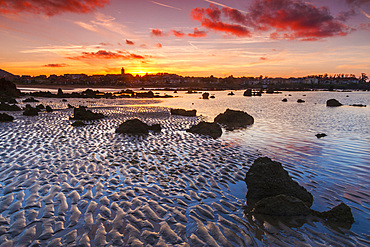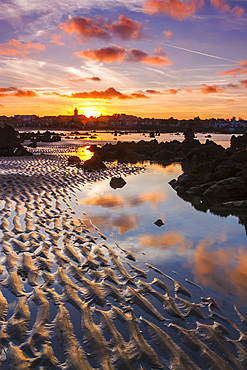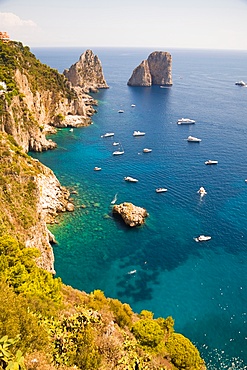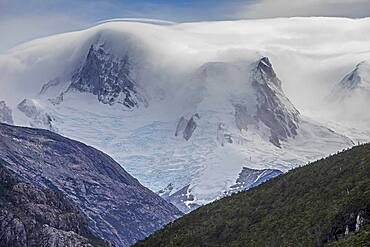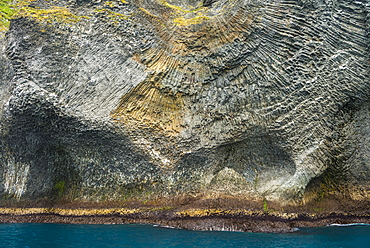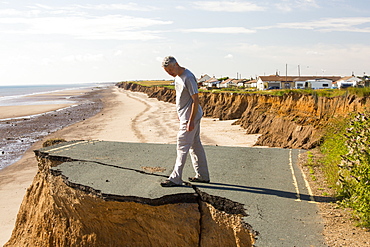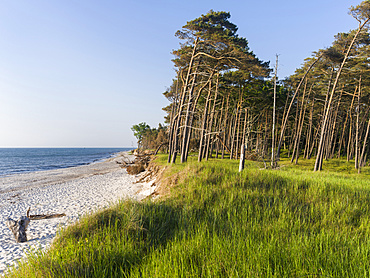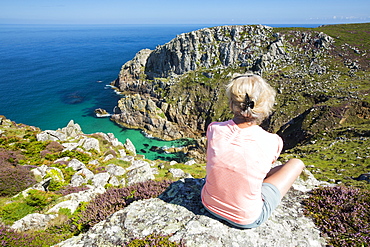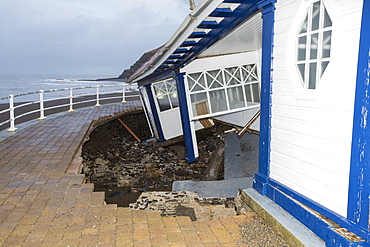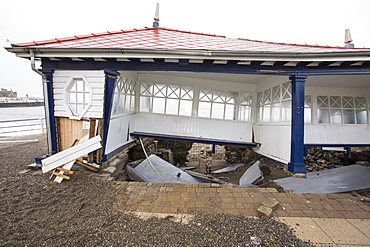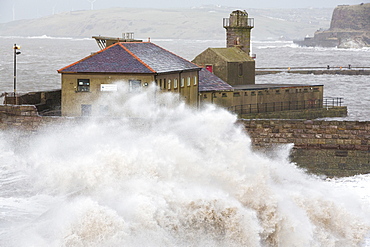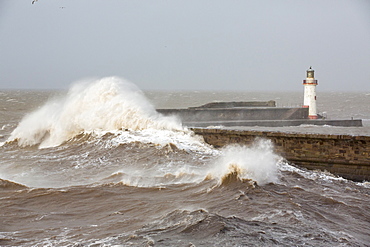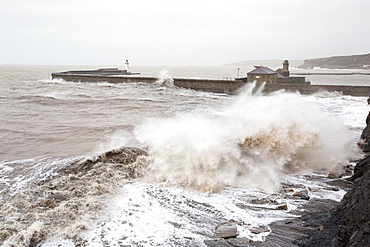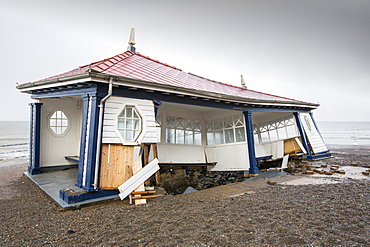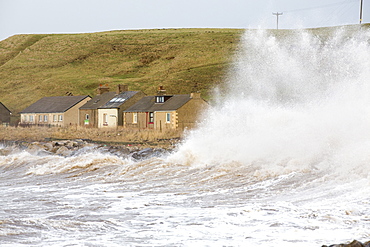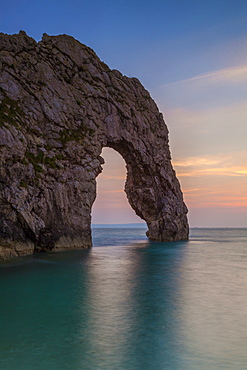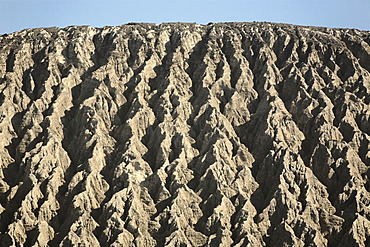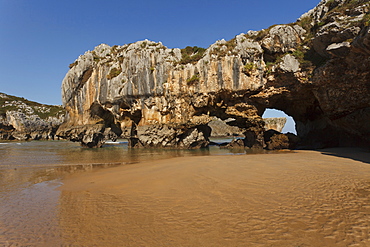Recent searches
Loading...
1116-52834 - Stunning view of the sandy beach with surf forming a zigzag pattern in the foam next to the large, boulders lining the shores at The Baths, a famous beach in the BVI's, Virgin Gorda, British Virgin Islands, Caribbean
1116-52832 - Woman standing under the large, boulders on the seaside shores of The Baths, a famous beach in the BVI's, Virgin Gorda, British Virgin Islands, Caribbean
832-399349 - Chalk cliffs, rock needle Aiguille and Porte dAval at the Falaise dAval in the evening light, Etretat, Alabaster Coast, La Cote dAlbatre, Normandy, France, Europe
832-397148 - Aerial view of ocean waves and fantastic rocky shoreline, Aerial view of a coastline along Great Ocean Road, Aerial view of waves hitting rocks on beach with turquoise water
1350-5474 - Rocky beach and village at dusk. Trengandin beach. Noja, Cantabria. Spain, Europe.
1350-5530 - Coastal landscape. La Ballena. Sonabia (Castro Urdiales) Cantabria, Spain, Europe.
1350-5475 - Rocky beach and village at dusk. Trengandin beach. Noja, Cantabria. Spain, Europe.
1350-5532 - Galizano bech aerial view. Ribamontan al Mar. Cantabria, Spain, Europe.
1350-5529 - Coastal landscape. Punta Sonabia o La Ballena (The whale),Cantabria, Spain, Europe.
1350-5473 - Rocky beach and village at dusk. Trengandin beach. Noja, Cantabria. Spain, Europe.
1350-5531 - Coastal landscape. Sonabia (Castro Urdiales) Cantabria, Spain, Europe.
1350-5478 - Coastal landscape. The Urros. Costa Quebrada. Liencres. Cantabria, Spain.
1174-10981 - Sandbags in rows at the water's edge to prevent erosion of the beach
1174-10980 - Sandbags in rows at the water's edge to prevent erosion of the beach
1174-10982 - Sandbags in rows at the water's edge to prevent erosion of the beach
1350-4695 - Faraglioni rocks and coastline, Capri, Italy
1116-50925 - The Twelve Apostles, limestone rock formations along the coast, Great Ocean Road, Port Campbell National Park; Port Campbell, Victoria, Australia
1116-51305 - Snaefellsjokull National Park; Helgafellssveit, Western Region, Iceland
1350-952 - Detail of Cordillera Darwin, from Beagle Channel (northwest branch), PN Alberto de Agostini, Tierra del Fuego, Patagonia, Chile
1350-954 - Pia Glacier, from Pia bay, in Beagle Channel (northwest branch), PN Alberto de Agostini, Tierra del Fuego, Patagonia, Chile
1350-733 - Ushuaia, Tierra del Fuego, Patagonia, Argentina
1350-953 - Pia Glacier, from Pia bay, in Beagle Channel (northwest branch), PN Alberto de Agostini, Tierra del Fuego, Patagonia, Chile
1350-955 - Pia bay or Pia Fjord, in Beagle Channel (northwest branch), PN Alberto de Agostini, Tierra del Fuego, Patagonia, Chile
1350-732 - Ushuaia, Tierra del Fuego, Patagonia, Argentina
1350-729 - Ushuaia, Tierra del Fuego, Patagonia, Argentina
1116-49415 - Coastline of Balancing Rock, Long Island, Digby Neck, Nova Scotia, Canada
1116-50003 - The Cave of Sykia; Milos Island, Cyclades, Greece
1116-47840 - Sea Stack, Dun Briste, in the water along the West coast of Ireland, Downpatrick Head, Wild Atlantic Way, Killala, County Mayo, Ireland
1116-48768 - A natural arch in the rock formation along the coast with mist rising off the water, Big Sur, California, United States of America
1116-48725 - Strange basalt rock formations on Heimaey, the largest of the Westman Islands, Iceland
1116-46939 - Coastal sea stacks, marsh grass and a full moon at twilight during low tide along the Minas Basin, North Medford, Nova Scotia, Canada
1116-45973 - Bowleaze Cove, Weymouth, Dorset, England
832-380916 - Steep cliff with arch of rock and small sandy beach, Cape Farewell, Tasman Sea, Puponga, North Island, New Zealand, Oceania
832-380859 - Moeraki boulders, at sunrise, geological formation, Koekohe Beach, Moeraki, East Coast, Otago, South Island, New Zealand, Oceania
832-380886 - Beach at Cathedral Cove, Mercury Bay, Coromandel Peninsula, North Island, New Zealand, Oceania
857-95431 - A collapsed coastal road at between Skipsea and Ulrome on Yorkshires East Coast, near Skipsea, UK. The coast is composed of soft boulder clays, very vulnerable to coastal erosion. This section of coast has been eroding since Roman times, with many villages having disappeared into the sea, and is the fastest eroding coast in Europe. Climate change is speeding up the erosion, with sea level rise, increased stormy weather and increased heavy rainfall events, all playing their part.
857-95432 - A collapsed coastal road at between Skipsea and Ulrome on Yorkshires East Coast, near Skipsea, UK. The coast is composed of soft boulder clays, very vulnerable to coastal erosion. This section of coast has been eroding since Roman times, with many villages having disappeared into the sea, and is the fastest eroding coast in Europe. Climate change is speeding up the erosion, with sea level rise, increased stormy weather and increased heavy rainfall events, all playing their part.
857-95435 - A collapsed coastal road at near Aldbrough on Yorkshires East Coast, near Skipsea, UK. The coast is composed of soft boulder clays, very vulnerable to coastal erosion. This section of coast has been eroding since Roman times, with many villages having disappeared into the sea, and is the fastest eroding coast in Europe. Climate change is speeding up the erosion, with sea level rise, increased stormy weather and increased heavy rainfall events, all playing their part.
857-95433 - A collapsed coastal road at between Skipsea and Ulrome on Yorkshires East Coast, near Skipsea, UK. The coast is composed of soft boulder clays, very vulnerable to coastal erosion. This section of coast has been eroding since Roman times, with many villages having disappeared into the sea, and is the fastest eroding coast in Europe. Climate change is speeding up the erosion, with sea level rise, increased stormy weather and increased heavy rainfall events, all playing their part.
857-95437 - A collapsed coastal road at between Skipsea and Ulrome on Yorkshires East Coast, near Skipsea, UK. The coast is composed of soft boulder clays, very vulnerable to coastal erosion. This section of coast has been eroding since Roman times, with many villages having disappeared into the sea, and is the fastest eroding coast in Europe. Climate change is speeding up the erosion, with sea level rise, increased stormy weather and increased heavy rainfall events, all playing their part.
857-95436 - A collapsed coastal road at between Skipsea and Ulrome on Yorkshires East Coast, near Skipsea, UK. The coast is composed of soft boulder clays, very vulnerable to coastal erosion. This section of coast has been eroding since Roman times, with many villages having disappeared into the sea, and is the fastest eroding coast in Europe. Climate change is speeding up the erosion, with sea level rise, increased stormy weather and increased heavy rainfall events, all playing their part.
857-95434 - A collapsed coastal road at Barmston on Yorkshires East Coast, near Skipsea, UK. The coast is composed of soft boulder clays, very vulnerable to coastal erosion. This section of coast has been eroding since Roman times, with many villages having disappeared into the sea, and is the fastest eroding coast in Europe. Climate change is speeding up the erosion, with sea level rise, increased stormy weather and increased heavy rainfall events, all playing their part.
857-95438 - Smashed concrete sea defenses at Ulrome near Skipsea on Yorkshires East Coast, UK. The sea has eroded past the barriers and left them stranded further down the beach. The coast is composed of soft boulder clays, very vulnerable to coastal erosion. This section of coast has been eroding since Roman times, with many villages having disappeared into the sea, and is the fastest eroding coast in Europe. Climate change is speeding up the erosion, with sea level rise, increased stormy weather and increased heavy rainfall events, all playing their part.
797-12992 - England, Dorset, Durdle Door, Close up of limestone arch on the Jurassic Coast.
797-12991 - England, Dorset, Limestone cliffs adjacent to Durdle Door.
746-88173 - Coastal forest at the Weststrand (western beach) on the Darss Peninsula. Western Pomerania Lagoon Area NP. Europe, Germany, West-Pomerania, June
746-88172 - The Weststrand (western beach) on the Darss Peninsula. The beach and the coastal forest is eroded by storms. Western Pomerania Lagoon Area NP. Europe, Germany, West-Pomerania, June
911-10890 - A road eroded and dropping off into the North sea at Happisburgh, Norfolk, a rapidly eroding section of coastline, UK.
911-10891 - A road eroded and dropping off into the North sea at Happisburgh, Norfolk, a rapidly eroding section of coastline, UK.
911-10836 - Granite sea cliffs at Bosigran on Cornwall's North Coast, UK.
911-10837 - Granite sea cliffs at Bosigran on Cornwall's North Coast, UK.
911-10835 - Granite sea cliffs at Bosigran on Cornwall's North Coast, UK.
911-10834 - Granite sea cliffs at Bosigran on Cornwall's North Coast, UK, with a woman sat overlooking the sea.
911-10750 - The Remains of the Godwin battery on the beach at Kilnsea at the head of Spurn point on Yorkshires East Coast, UK. Initially constructed during the First World War, the Godwin Battery was added to during the Second World War. It comprised of gun emplacements, search light, barracks, officers’ mess, and a hospital. This section of coastline is the fastest eroding coastline in Europe. The soft boulder clay cliffs are easily eroded and have been eroding since Roman Times, but recently the climate change impacts of increased stormy weather, increased heavy rainfall events and sea level rise have accelerated the rate of erosion. The average rate of attrition is 1.5metres per year, last year it was 5 metres.
911-10758 - After a week of high tides, storm surges and storm force winds, the sea front promenade of Aberystwyth in Wales has been devastated, with millions of £'s of damage. The crsahing waves punched a large hole in the sea wall and has collapsed Aberystwyth's iconic, Victorian promenade shelter, which has stood for over 100 years. This picture was taken on Wednesday 8th January, 2014, the day the council started to try and clear the thousands of tonnes of beach rubble off the sea front road.
911-10756 - After a week of high tides, storm surges and storm force winds, the sea front promenade of Aberystwyth in Wales has been devastated, with millions of £'s of damage. The crsahing waves punched a large hole in the sea wall and has collapsed Aberystwyth's iconic, Victorian promenade shelter, which has stood for over 100 years. This picture was taken on Wednesday 8th January, 2014, the day the council started to try and clear the thousands of tonnes of beach rubble off the sea front road.
911-10754 - Whitehaven harbour during the January 2014 period of storm surge, high tides and storm force winds. The coastline took a battering, damaging the harbour wall and eroding a large section of coastal cliff.
911-10753 - Whitehaven harbour being completely overwhelmed by huge waves during the January 2014 period of storm surge, high tides and storm force winds. The coastline took a battering, damaging the harbour wall and eroding a large section of coastal cliff.
911-10749 - The Remains of the Godwin battery on the beach at Kilnsea at the head of Spurn point on Yorkshires East Coast, UK. Initially constructed during the First World War, the Godwin Battery was added to during the Second World War. It comprised of gun emplacements, search light, barracks, officers’ mess, and a hospital. This section of coastline is the fastest eroding coastline in Europe. The soft boulder clay cliffs are easily eroded and have been eroding since Roman Times, but recently the climate change impacts of increased stormy weather, increased heavy rainfall events and sea level rise have accelerated the rate of erosion. The average rate of attrition is 1.5metres per year, last year it was 5 metres.
911-10752 - Whitehaven harbour during the January 2014 period of storm surge, high tides and storm force winds. The coastline took a battering, damaging the harbour wall and eroding a large section of coastal cliff.
911-10775 - A road closed on Walney Island, Cumbria, UK, following coastal erosion during severe winter storms.
911-10757 - After a week of high tides, storm surges and storm force winds, the sea front promenade of Aberystwyth in Wales has been devastated, with millions of £'s of damage. The crsahing waves punched a large hole in the sea wall and has collapsed Aberystwyth's iconic, Victorian promenade shelter, which has stood for over 100 years. This picture was taken on Wednesday 8th January, 2014, the day the council started to try and clear the thousands of tonnes of beach rubble off the sea front road.
911-10755 - Waves crashing off Parton near Whitehaven during the January 2014 period of storm surge, high tides and storm force winds. The coastline took a battering, damaging the harbour wall and eroding a large section of coastal cliff.
911-10551 - Coastal scenery near Achmelvich in Assynt, North West Highlands, Scotland, UK.
911-10173 - A holiday chalet in the sand dunes at low Newton by the Sea on Northumberland's coast stands precarioulsy close to the edge following a severe storm surge in December 2013 that caused considerable erosion to the sand dunes.
911-10073 - A collapsed coastal road at Barmston on Yorkshires East Coast, near Skipsea, UK. The coast is composed of soft boulder clays, very vulnerable to coastal erosion. This sectiion of coast has been eroding since Roman times, with many villages having disappeared into the sea, and is the fastest eroding coast in Europe. Climate change is speeding up the erosion, with sea level rise, increased stormy weather and increased heavy rainfall events, all palying their part.
911-10074 - A Second world War lookout post leaning alarmingly and about to tumble over the edge of the cliff near Aldbrough on Yorkshires East Coast, UK. The coast is composed of soft boulder clays, very vulnerable to coastal erosion. This section of coast has been eroding since Roman times, with many villages having disappeared into the sea, and is the fastest eroding coast in Europe. Climate change is speeding up the erosion, with sea level rise, increased stormy weather and increased heavy rainfall events, all playing their part.
911-10071 - A collapsed coastal road at between Skipsea and Ulrome on Yorkshires East Coast, near Skipsea, UK. The coast is composed of soft boulder clays, very vulnerable to coastal erosion. This sectiion of coast has been eroding since Roman times, with many villages having disappeared into the sea, and is the fastest eroding coast in Europe. Climate change is speeding up the erosion, with sea level rise, increased stormy weather and increased heavy rainfall events, all palying their part.
911-10069 - Concrete sea defences at Beach Bank Caravan Park in Ulrome near Skipsea on Yorkshires East Coast, UK. The coast is composed of soft boulder clays, very vulnerable to coastal erosion. This section of coast has been eroding since Roman times, with many villages having disappeared into the sea, and is the fastest eroding coast in Europe. Climate change is speeding up the erosion, with sea level rise, increased stormy weather and increased heavy rainfall events, all playing their part.
911-10101 - Cornish coastal scenery at Porthmeor Cove near Zennor, UK, with Purple loosestrife (Lythrum salicaria) flowering in the foreground.
911-10070 - A collapsed coastal road at near Aldbrough on Yorkshires East Coast, near Skipsea, UK. The coast is composed of soft boulder clays, very vulnerable to coastal erosion. This sectiion of coast has been eroding since Roman times, with many villages having disappeared into the sea, and is the fastest eroding coast in Europe. Climate change is speeding up the erosion, with sea level rise, increased stormy weather and increased heavy rainfall events, all palying their part.
911-10066 - A collapsed coastal road at Easingotn on Yorkshires East Coast, near Skipsea, UK. The coast is composed of soft boulder clays, very vulnerable to coastal erosion. This sectiion of coast has been eroding since Roman times, with many villages having disappeared into the sea, and is the fastest eroding coast in Europe. Climate change is speeding up the erosion, with sea level rise, increased stormy weather and increased heavy rainfall events, all palying their part.
911-10100 - Cornish coastal scenery at Porthmeor Cove near Zennor, UK.
911-10068 - A collapsed coastal road at between Skipsea and Ulrome on Yorkshires East Coast, near Skipsea, UK. The coast is composed of soft boulder clays, very vulnerable to coastal erosion. This sectiion of coast has been eroding since Roman times, with many villages having disappeared into the sea, and is the fastest eroding coast in Europe. Climate change is speeding up the erosion, with sea level rise, increased stormy weather and increased heavy rainfall events, all palying their part.
911-10072 - A collapsed coastal road at between Skipsea and Ulrome on Yorkshires East Coast, near Skipsea, UK. The coast is composed of soft boulder clays, very vulnerable to coastal erosion. This sectiion of coast has been eroding since Roman times, with many villages having disappeared into the sea, and is the fastest eroding coast in Europe. Climate change is speeding up the erosion, with sea level rise, increased stormy weather and increased heavy rainfall events, all palying their part.
911-10067 - A collapsed coastal road near Skipsea on Yorkshires East Coast, UK. The coast is composed of soft boulder clays, very vulnerable to coastal erosion. This sectiion of coast has been eroding since Roman times, with many villages having disappeared into the sea, and is the fastest eroding coast in Europe. Climate change is speeding up the erosion, with sea level rise, increased stormy weather and increased heavy rainfall events, all playing their part.
797-11495 - France, Brittany, Pointe de Pen-Hir, Les Tas de Pois, Pile of Peas, islets off the Pointe de Pen-Hir on the Presqu'ile de Crozon.
797-11496 - England, East Sussex,, Eastbourne, Beachy Head Lighthouse.
799-2771 - Wooden sea defences at Porlock Bay in Exmoor National Park, Somerset, England, United Kingdom, Europe
696-717 - Durdle Door, Lulworth Cove, Jurassic Coast, UNESCO World Heritage Site, Dorset, England, United Kingdom, Europe
832-372276 - Mountain with deep furrows, erosion from wind and water, San Benedicto Island, near Socorro, Revillagigedo Islands, archipelago, Mexico, eastern Pacific
832-366604 - Great Ocean Road, Loch Ard Gorge, cliffs and coastal landscape, Southern Ocean, Victoria, Australia
832-366608 - Great Ocean Road, The Twelve Apostles, Southern Ocean, Victoria, Australia
832-366603 - Great Ocean Road, cliffs and coastal landscape next to the Twelve Apostles, Southern Ocean, Victoria, Australia
832-366597 - Great Ocean Road, The Twelve Apostles, Southern Ocean, Victoria, Australia
832-366598 - Great Ocean Road, The Twelve Apostles, Southern Ocean, Victoria, Australia
832-366591 - Great Ocean Road, The Twelve Apostles, Southern Ocean, Victoria, Australia
832-366607 - Great Ocean Road, The Razorback limestone cliff, Southern Ocean, Victoria, Australia
1113-93403 - Playa de Cuevas del Mar, beach, rock formation, caves, rock arch, coast, Atlantic ocean, near Ribadesella, Camino de la Costa, Camino del Norte, coastal route, Way of Saint James, Camino de Santiago, pilgrims way, province of Asturias, Principality of Asturias, Northern Spain, Spain, Europe
817-445648 - Jaizkibel, Geological formations, Cantabrian Sea, Gipuzkoa, Basque Country, Spain, Europe.
869-3361 - parallel rock formations on sea shore in tidal zone of sea bird's eye view outdoors La Rasa Mareal flysch cliffs Basque Country Spain Europe
869-3354 - parallel rock formations on sea shore in tidal zone of sea with sun at sunset sunrise in background contre-jour shot backlit outdoors La Rasa Mareal flysch cliffs Basque Country Spain Europe
869-3362 - parallel rock formations on sea shore in tidal zone of sea bird's eye view outdoors La Rasa Mareal flysch cliffs Basque Country Spain Europe
869-3363 - parallel rock formations on sea shore in tidal zone of sea top view outdoors La Rasa Mareal flysch cliffs Basque Country Spain Europe
869-3352 - parallel rock formations on sea shore in tidal zone of sea outdoors La Rasa Mareal flysch cliffs algae alga algal growth Basque Country Spain Europe
869-3353 - parallel rock formations on sea shore in tidal zone of sea with sun at sunset sunrise in background contre-jour shot backlit outdoors La Rasa Mareal flysch cliffs Basque Country Spain Europe
869-3364 - parallel rock formations on sea shore in tidal zone of sea top view outdoors La Rasa Mareal flysch cliffs Basque Country Spain Europe
869-3358 - parallel rock formations on sea shore in tidal zone of sea outdoors La Rasa Mareal flysch cliffs algae alga algal growth Basque Country Spain Europe




